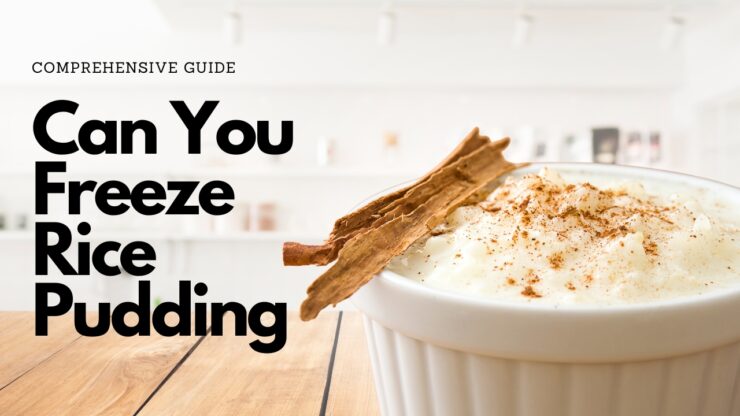Rice pudding is a delightful dessert that has been enjoyed by people all around the world for centuries. Its creamy texture and versatile flavor make it an ideal treat for any occasion. But can you freeze rice pudding? And if so, what’s the best way to do it? In this comprehensive guide, we’ll explore the ins and outs of freezing rice pudding, answering all your questions and offering valuable insights to ensure your dessert stays fresh and delicious. From storage techniques to defrosting, let’s dive into the fascinating world of rice pudding preservation.
The Great Freezing Debate
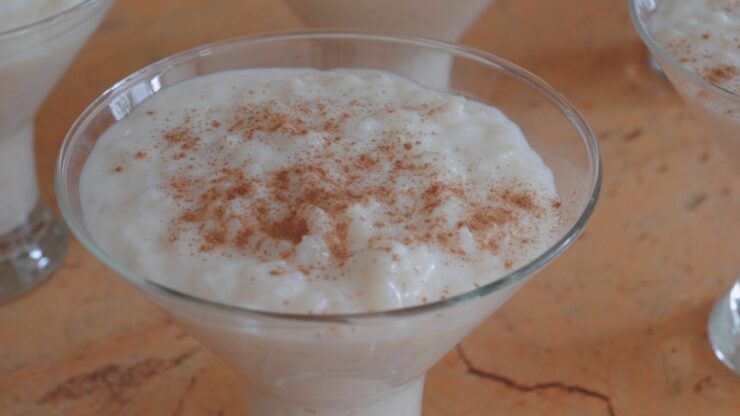
One of the most common questions among rice pudding enthusiasts is whether or not this tasty treat can be frozen. The answer is yes, you can freeze it. However, there are a few key factors you’ll need to consider to ensure the best possible results.
The Science of Freezing Rice Pudding
It is made primarily of cooked rice, milk, sugar, and flavorings like vanilla or cinnamon. When frozen, the water content in both the rice and the milk forms ice crystals. These ice crystals can alter the texture of your rice pudding, making it less creamy and potentially a bit grainy when thawed. Despite this potential change in texture, freezing rice pudding is a viable option for preserving it. The trick is to take the right steps to minimize the formation of ice crystals and maintain the dessert’s original quality.
How to Properly Freeze Rice Pudding
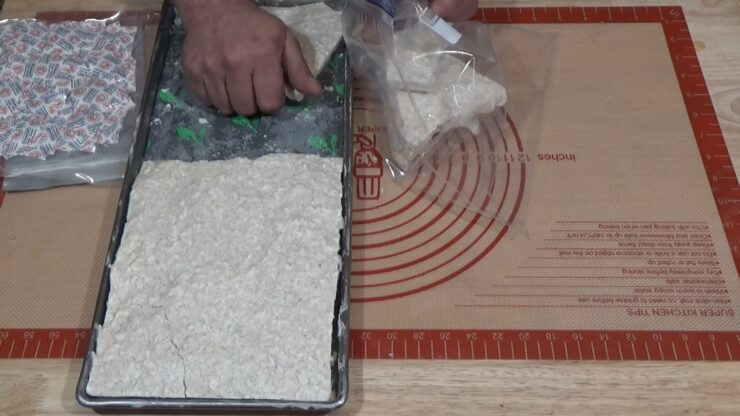
Before you even think about freezing, make sure your rice pudding has cooled down to room temperature. This will help prevent condensation and ice crystal formation during the freezing process.
Choose the right container
Select airtight, freezer-safe containers to store them. Avoid using glass containers, as they can crack or shatter at low temperatures. Plastic containers with tight-fitting lids or heavy-duty freezer bags are excellent choices.
Portion control
Divide it into smaller portions for more convenient freezing and defrosting. This also helps the rice pudding freeze more evenly, reducing the risk of ice crystals forming.
Leave some headspace
When freezing liquids, they tend to expand. To prevent any spills or messes, leave about half an inch of headspace at the top of your container or freezer bag.
Label your containers
Don’t forget to label your containers with the date and contents. This will help you keep track of how long your rice pudding has been in the freezer and make it easier to find when you’re ready to enjoy it.
Freeze
Place the containers in the coldest part of your freezer, usually towards the back. Allow the rice pudding to freeze completely, which can take anywhere from 4 to 6 hours. Pro Tip: For an extra layer of protection against freezer burn, you can wrap your container in aluminum foil or plastic wrap.
The Thawing Process
Once you’re ready to indulge in your frozen rice pudding, the next step is to thaw it safely and effectively. Follow these steps to ensure a smooth and enjoyable defrosting process:
Plan ahead
It should be defrosted slowly to minimize any changes in texture. This means you should plan to defrost your rice pudding in the refrigerator for at least 4 to 6 hours or overnight.
Avoid the microwave
While it may be tempting to use the microwave to speed up the thawing process, this can cause uneven defrosting and potentially ruin your rice pudding’s texture.
Check for consistency
Once your rice pudding has defrosted, give it a gentle stir to redistribute any separated liquids and ensure an even consistency. If you find that your rice pudding is a bit grainy or watery, try stirring in a small amount of milk or cream to restore its creamy texture.
Reheat (optional)
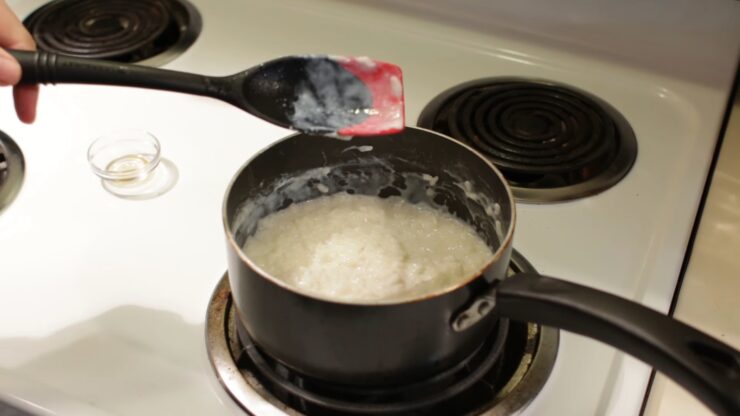
Some people prefer their rice pudding warm, while others enjoy it cold. If you’d like to serve your rice pudding warm, you can reheat it gently on the stovetop over low heat or in the microwave using short intervals and stirring frequently. Be sure not to overheat the rice pudding, as this can cause it to become too thick or even scorch.
Add a finishing touch
To elevate your defrosted rice pudding, consider adding a sprinkling of cinnamon, a dollop of whipped cream, or a drizzle of caramel sauce just before serving. This can help to enhance the, making your rice pudding even more enjoyable.
How Long Can You Freeze Rice Pudding?
When stored properly, rice pudding can be kept in the freezer for up to 3 months. While it’s still safe to eat beyond this time, the quality may begin to deteriorate, and you may notice changes in taste and texture. To ensure the freshest flavor, it’s best to consume your frozen rice pudding within the 3-month window. Remember to always label your containers with the date to help you keep track of how long your dessert has been stored.
How to know if rice pudding has gone bad
It is a dairy-based dessert that is prone to spoilage if not stored properly. Signs that your rice pudding has gone bad and is no longer safe to consume include a sour or off smell, a slimy or grainy texture, and the presence of mold or discoloration. If it has been sitting in the fridge for more than 3-4 days, it is recommended to discard it. When in doubt, it is always better to err on the side of caution and throw away any food that looks or smells questionable to avoid the risk of foodborne illness.
The nutritional value
It is a good source of carbohydrates, which can provide energy, and also contains some protein and calcium. However, when rice pudding is frozen, some of its nutritional value can be lost. Freezing can cause changes in the texture and taste of the pudding, and may also cause some nutrient loss. The process of freezing can cause ice crystals to form within the pudding, which can damage the delicate structure of the food. This can result in a loss of texture and a change in taste.
Additionally, some of the nutrients in the pudding may be lost during the freezing process, especially if the pudding is frozen for an extended period of time. Despite these potential drawbacks, it can still be a tasty and convenient dessert option. To minimize nutrient loss and preserve the quality of the pudding, it is important to follow proper freezing and thawing techniques. It is recommended to freeze it in airtight containers and to consume it within a few weeks for the best quality. Thawing should be done slowly in the refrigerator to prevent the formation of ice crystals.
The Pros and Cons of Freezing Rice Pudding
While freezing is a convenient method of preservation, it’s essential to weigh the pros and cons before deciding if this is the right option for you.
Pros:
Extends the shelf life of your rice pudding, allowing you to enjoy it for months after it’s made. Provides a convenient way to store leftovers or make-ahead meals. Offers the flexibility to portion and store rice pudding in individual servings.
Cons:
The freezing process may alter the texture of your rice pudding, making it less creamy and potentially grainy when thawed. The defrosting process requires planning and can be time-consuming. The quality of the rice pudding may decline after 3 months in the freezer.
FAQs
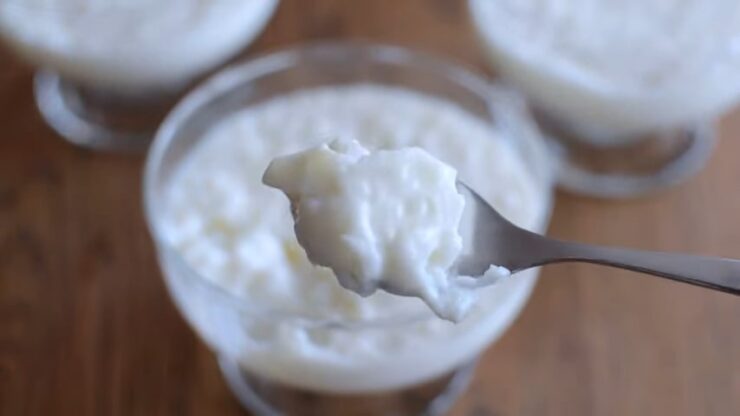
Can I freeze rice pudding made with an alternative milk, such as almond or coconut milk?
Yes, rice pudding made with alternative milk can be frozen. The process remains the same as for one made with regular milk. Keep in mind that the texture may change slightly after thawing.
How do I restore the creamy texture of rice pudding after thawing?
If it is grainy or watery after thawing, try stirring in a small amount of milk or cream to restore its original creamy texture.
Can I refreeze rice pudding that has been thawed?
It is not recommended to refreeze it once it has been thawed, as this can negatively affect the taste, texture, and overall quality of the dessert.
Is it safe to freeze rice pudding in glass containers?
It is not advisable to freeze it in glass containers, as they can crack or shatter at low temperatures. Use plastic containers with tight-fitting lids or heavy-duty freezer bags instead.
How can I prevent freezer burn when freezing rice pudding?
To prevent freezer burn, make sure it is stored in airtight, freezer-safe containers. You can also add an extra layer of protection by wrapping the container in aluminum foil or plastic wrap.
How do I know if my frozen rice pudding is still good to eat?
Check for any signs of freezer burn or unpleasant odors. If it has been in the freezer for more than 3 months, the quality may have declined, but it should still be safe to eat. However, if you notice any off smells or visible mold, discard it.
Can freezing rice pudding affect its nutritional value?
Freezing does not significantly affect its nutritional value. The freezing process may cause minor nutrient loss, but the overall impact is negligible. When properly frozen and thawed, you can still enjoy the same benefits of this delicious dessert as when it was freshly made.
Conclusion

Freezing rice pudding is a viable option for preserving this delectable dessert, but it’s crucial to follow the proper techniques to ensure the best possible results. By cooling your rice pudding completely, choosing the right containers, and defrosting slowly in the refrigerator, you can minimize changes in texture and enjoy your favorite treat for months to come. So go ahead, indulge your sweet tooth, and enjoy the convenience of having a delicious rice pudding waiting for you in the freezer. Just remember to label those containers, and don’t forget to add a little something special when it’s time to serve. Your taste buds will thank you.

